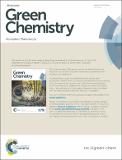Files in this item
Is oxidation-reduction a real robust strategy for lignin conversion? A comparative study on lignin and model compounds
Item metadata
| dc.contributor.author | Guo, Haiwei | |
| dc.contributor.author | Miles-Barrett, Daniel | |
| dc.contributor.author | Zhang, Bo | |
| dc.contributor.author | Wang, Ai-Qin | |
| dc.contributor.author | Zhang, Tao | |
| dc.contributor.author | Westwood, Nicholas J. | |
| dc.contributor.author | Li, Changzhi | |
| dc.date.accessioned | 2019-12-20T00:36:13Z | |
| dc.date.available | 2019-12-20T00:36:13Z | |
| dc.date.issued | 2019-02-21 | |
| dc.identifier | 257022417 | |
| dc.identifier | 58be8b4a-f7ec-4380-8377-d8b2cbbb698d | |
| dc.identifier | 85061976347 | |
| dc.identifier | 000459890600018 | |
| dc.identifier.citation | Guo , H , Miles-Barrett , D , Zhang , B , Wang , A-Q , Zhang , T , Westwood , N J & Li , C 2019 , ' Is oxidation-reduction a real robust strategy for lignin conversion? A comparative study on lignin and model compounds ' , Green Chemistry , vol. 21 , no. 4 , pp. 803-811 . https://doi.org/10.1039/C8GC02670J | en |
| dc.identifier.issn | 1463-9262 | |
| dc.identifier.other | ORCID: /0000-0003-0630-0138/work/56424190 | |
| dc.identifier.uri | https://hdl.handle.net/10023/19171 | |
| dc.description | This work was supported by the National Natural Science Foundation of China (21690080, 21690083, 21473187, 21506214), DNL cooperation fund, CAS (DNL180302), the 2017 Royal Society International Collaboration Award (IC170044), the Strategic Priority Research Program of the Chinese Academy of Sciences (XDB17020100), China Scholarship Council (GH). | en |
| dc.description.abstract | This study focuses on the oxidation-reduction method for lignin depolymerization, an increasingly popular approach to lignin valorization. The effects of oxidative pretreatment on downstream lignin hydrogenolysis were carefully studied over various heterogeneous catalysts. It was found that oxidative pretreatment provided a promising strategy to produce renewable carbonyl-containing aromatics. However, oxidative pretreatment led to decreased monomer and aromatic oil yields compared to untreated lignin using W2C/AC and four commercial catalysts. The results with lignin contrasted with those of model compounds where the oxidative pretreatment led to increased efficiency in the cleavage of β-O-4 linkages. FT-IR, gel permeation chromatography, 2D HSQC NMR, GC-MS and elemental analysis characterization of lignin and ligninα-OX have been used to identify possible reasons for the contrasting results found with lignin and the model compounds. It is proposed that undesired degradation of linkages, condensation and modification of lignin occurred during lignin oxidation. This work provides an advanced perspective on the oxidation-reduction strategy for lignin depolymerization. | |
| dc.format.extent | 1501505 | |
| dc.language.iso | eng | |
| dc.relation.ispartof | Green Chemistry | en |
| dc.subject | QD Chemistry | en |
| dc.subject | NDAS | en |
| dc.subject | SDG 7 - Affordable and Clean Energy | en |
| dc.subject.lcc | QD | en |
| dc.title | Is oxidation-reduction a real robust strategy for lignin conversion? A comparative study on lignin and model compounds | en |
| dc.type | Journal article | en |
| dc.contributor.institution | University of St Andrews. School of Chemistry | en |
| dc.contributor.institution | University of St Andrews. EaSTCHEM | en |
| dc.contributor.institution | University of St Andrews. Biomedical Sciences Research Complex | en |
| dc.identifier.doi | 10.1039/C8GC02670J | |
| dc.description.status | Peer reviewed | en |
| dc.date.embargoedUntil | 2019-12-20 |
This item appears in the following Collection(s)
Items in the St Andrews Research Repository are protected by copyright, with all rights reserved, unless otherwise indicated.

